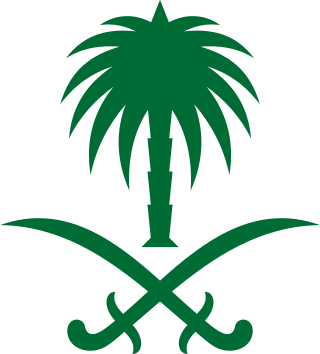Related Research Articles

Natives of the Arabian Peninsula, many Qataris are descended from a number of migratory Arab tribes that came to Qatar in the 18th century from mainly the neighboring areas of Nejd and Al-Hasa. Some are descended from Omani tribes. Qatar has about 2.6 million inhabitants as of early 2017, the vast majority of whom live in Doha, the capital. Foreign workers amount to around 88% of the population, the largest of which comprise South Asians, with those from India alone estimated to be around 700,000. Egyptians and Filipinos are the largest non-South Asian migrant group in Qatar. The treatment of these foreign workers has been heavily criticized with conditions suggested to be modern slavery. However the International Labour Organization published report in November 2022 that contained multiple reforms by Qatar for its migrant workers. The reforms included the establishment of the minimum wage, wage protection regulations, improved access for workers to justice, etc. It included data from last 4 years of progress in workers conditions of Qatar. The report also revealed that the freedom to change jobs was initiated, implementation of Occupational safety and health & labor inspection, and also the required effort from the nation's side.

The political system of Qatar runs under an authoritarian semi-constitutional monarchy with the emir as head of state and chief executive, and the prime minister as the head of government. Under the Constitution of Qatar, the partially-elected Consultative Assembly has a limited ability to reject legislation and dismiss ministers. The second general election was held in 2021; political parties are banned and all candidates have to run as independents.

The economy of Qatar is one of the highest in the world based on GDP per capita, ranking generally among the top ten richest countries on world rankings for 2015 and 2016 data compiled by the World Bank, the United Nations, and the International Monetary Fund (IMF). The country's economy has grown despite sanctions by its neighbors, Saudi Arabia and the United Arab Emirates. Mainly because the country exports primarily to Japan, South Korea, India and China, making the sanctions effectively redundant as neither Saudi Arabia nor the United Arab Emirates have imposed trading penalties such as tariffs or embargoes on any of these countries for trading with Qatar, or offering incentives such as discounts for their own energy exports to reduce Qatari exports.
The education system in Qatar is jointly directed and controlled by the Supreme Education Council (SEC) and the Ministry of Education and Higher Education (MOEHE) at all levels. The SEC is responsible for overseeing independent schools, whereas the MOE is responsible for providing support to private schools. Formal schooling officially began in 1956. Primary schooling is obligatory for every child and is free in public schools.

Education City is an educational and research hub located in Al Rayyan Municipality in the Doha Metropolitan Area of Qatar. Developed by the Qatar Foundation, it was established by Sheikha Moza bint Nasser to advance education, research, and innovation in the region. spanning 12 square kilometres (4.6 sq mi) property houses various educational facilities, including satellite campuses of eight international universities. Beyond higher education, Education City features research centers, cultural institutions, and community spaces, symbolizing Qatar’s vision of becoming a knowledge-based society while fostering cross-cultural exchange and sustainable development.

Saudization, officially the Saudi nationalization scheme and also known as Nitaqat, is a policy that is implemented in the Kingdom of Saudi Arabia by the Ministry of Labor and Social Development, which requires companies and enterprises to fill their workforce with Saudi nationals up to certain levels.

Qatar, officially the State of Qatar, is a country in West Asia. It occupies the Qatar Peninsula on the northeastern coast of the Arabian Peninsula in the Middle East; it shares its sole land border with Saudi Arabia to the south, with the rest of its territory surrounded by the Persian Gulf. The Gulf of Bahrain, an inlet of the Persian Gulf, separates Qatar from nearby Bahrain. The capital is Doha, home to over 80% of the country's inhabitants. Most of the land area is made up of flat, low-lying desert.

Qatar is a Muslim-majority country with Islam as the state religion. Salafi version of Islam is the state sponsored brand of Sunni Islam in the country, making Qatar one of the many Salafi states in the Muslim world, along with Saudi Arabia, Kuwait, Syria, Pakistan, Sudan, Indonesia and Palestine.

The state of human rights in Qatar is a concern for several non-governmental organisations, such as the Human Rights Watch (HRW), which reported in 2012 that hundreds of thousands of mostly South Asian migrant workers in construction in Qatar risk serious exploitation and abuse, sometimes amounting to forced labour. Qatar is an authoritarian and de facto absolute monarchy under the House of Thani. Qatari law also does not permit the establishment of political bodies or trade unions. Awareness of human rights abuses in Qatar grew internationally after Qatar's controversial selection to stage the 2022 FIFA World Cup.

Doha is the capital city and main financial hub of Qatar. Located on the Persian Gulf coast in the east of the country, north of Al Wakrah and south of Al Khor and Lusail, it is home to most of the country's population. It is also Qatar's fastest growing city, with over 80% of the nation's population living in Doha or its surrounding suburbs, known collectively as the Doha Metropolitan Area.
Ghanim Bin Saad Al Saad is a Qatari businessperson. He is chairman of GSSG Holding, a private family holding company diversified across dozens of sectors and companies in Qatar and around the world.

Women in Qatar are subject to the country's male guardianship law. Qatar is the only remaining country in the Gulf region with such laws, Women in Qatar were enfranchised at the same time as men. Labour force participation rates of Qatari women are above the world average and among the highest in the Arab World, which comes mainly as a result of an increasing number of Qatari women who are attaining academic degrees.

The Japan School of Doha is a Japanese international school located in Doha, Qatar.

The mass media in Qatar relays information and data in Qatar by means of television, radio, cinema, newspapers, magazines and the internet. Qatar has established itself as a leading regional figure in mass media over the past decade. Al Jazeera, a global news network which was established in 1996, has become the foundation of the media sector. The country uses media to brand itself and raise its international profile.
Qatar National Vision 2030 is a development plan launched in October 2008 by the General Secretariat for Development Planning in the State of Qatar. The aim of QNV 2030 is to "transform Qatar into an advanced society capable of achieving sustainable development" by 2030. The plan's development goals are divided into four central pillars: economic, social, human, and environmental development. The government seeks to meet development goals by developing a strong bureaucratic framework and implementing strategies to address the challenges presented in human development reports.

India–Qatar relations refers to the bilateral ties between India and Qatar. India maintains an embassy in Doha, while Qatar maintains an embassy in New Delhi and a consulate in Mumbai.
Workforce nationalization is a government initiative that can be described as the recruitment and employee development to encourage or often require the employment of native-born population in certain jobs or industry sectors, thus reducing a country‘s dependency on an expatriate workforce. These efforts have been defined as a multi-level process through which reliance on the expatriate workforce is reduced and native-born population is prepared to take up jobs performed by expatriates. Such preparation enables native-born employees to perform their jobs equally as well as, if not better than, expatriates in the shortest possible period.
Migrant workers in the Gulf Cooperation Council region involves the prevalence of migrant workers in the Kingdom of Bahrain, the State of Kuwait, the Sultanate of Oman, the State of Qatar, the Kingdom of Saudi Arabia and the United Arab Emirates (UAE). Together, these six countries form the Gulf Cooperation Council (GCC), established in 1981. The GCC cooperates on issues related to economy and politics, and the subject of migrant workers constitutes a substantial part of the council's collaboration. All of the GCC countries are dependent on migrant labor to bolster and stimulate economic growth and development, as the GCC countries possess an abundance of capital while the domestic labor capacity is low. Although migrant workers in the Persian Gulf region amount to no more than 10% of all migrants worldwide, they constitute a significant part of the populations of their host countries.

China – Qatar relations are the bilateral relations between the People's Republic of China and the State of Qatar. China has an embassy in Doha, while Qatar has an embassy in Beijing. With diplomatic relations first formed in 1988, Qatar is a strategic ally of China, and the two countries maintain a strong relationship.

Kosovan-Qatari relations are foreign relations between Kosovo and Qatar. Kosovo declared its independence from Serbia on 17 February 2008 and Qatar recognized it on 7 January 2011. Since then, the two countries have developed a relationship with mutual recognition and shared interests, in political and economic areas.
References
- 1 2 "Qatarization". Qatar Foundation. Retrieved 27 June 2015.
- ↑ "Qatarization". Qatar Chemical Company Ltd. Retrieved 27 June 2015.
- ↑ Maryam Al-Subaiey. "Qatarization Policy – Implementation Challenges" (PDF). Brookings Doha Center. p. 3. Retrieved 27 June 2015.
- 1 2 3 Dominic J. Brewer; Catherine H. Augustine; Gail L. Zellman; Gery W. Ryan; Charles A. Goldman; Gery Ryan (2007). Education for a New Era: Design and Implementation of K-12 Education Reform in Qatar. Rand Corporation. p. 19.
- 1 2 Abdulla Juma Kobaisi. "The Development of Education in Qatar, 1950–1970" (PDF). Durham University. p. 9. Retrieved 17 June 2015.
- ↑ "Facing Human Capital Challenges of the 21st Century" (PDF). RAND-Qatar Policy Institute. 2008. p. 79. Retrieved 27 June 2015.
- ↑ "Facing Human Capital Challenges of the 21st Century" (PDF). RAND-Qatar Policy Institute. 2008. p. 61. Retrieved 27 June 2015.
- ↑ Maryam Al-Subaiey. "Qatarization Policy – Implementation Challenges" (PDF). Brookings Doha Center. p. 8. Retrieved 27 June 2015.